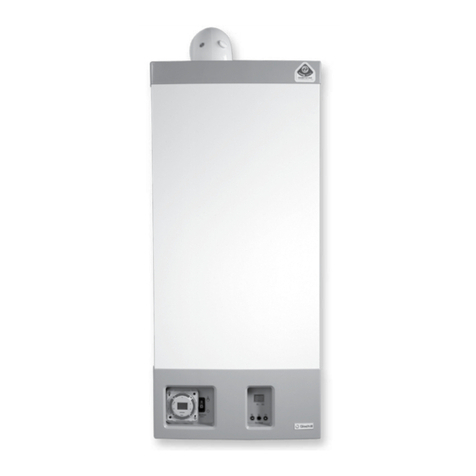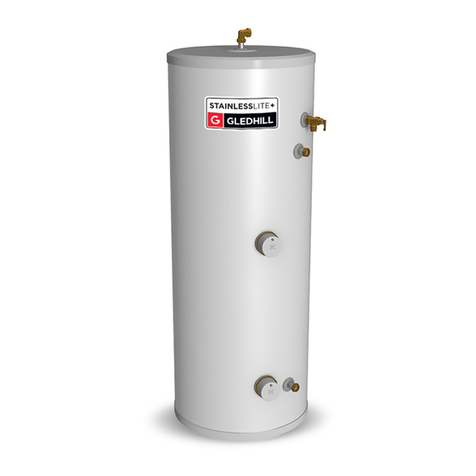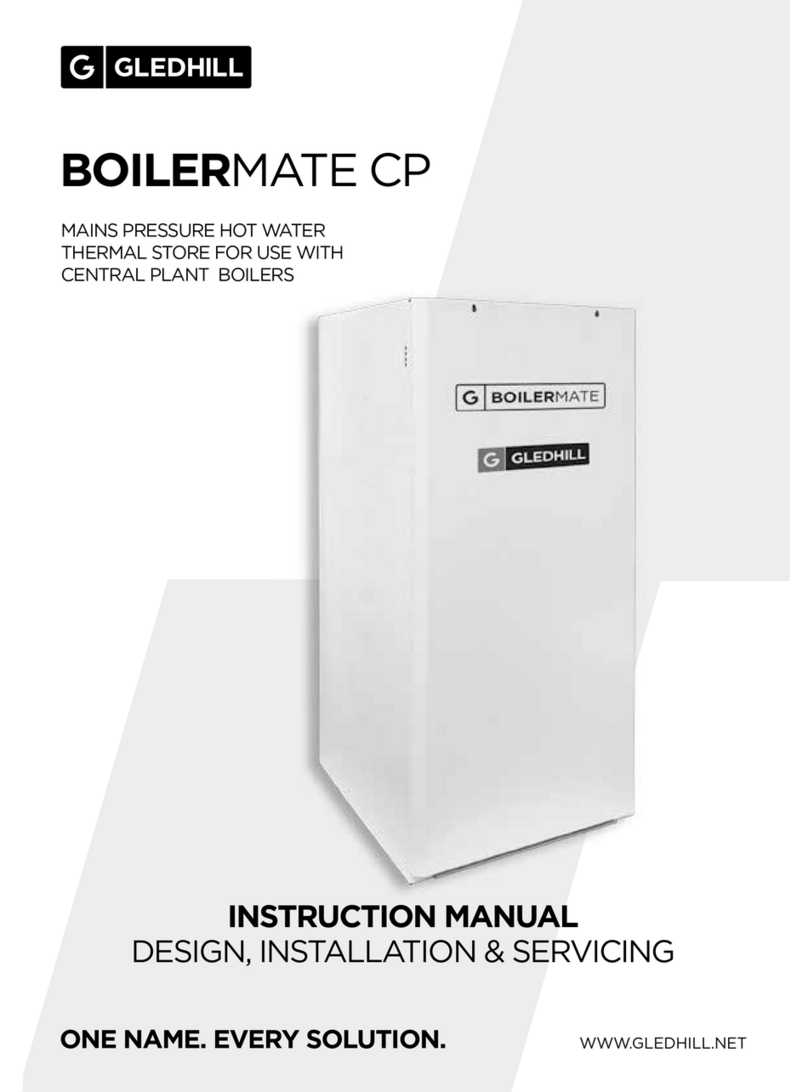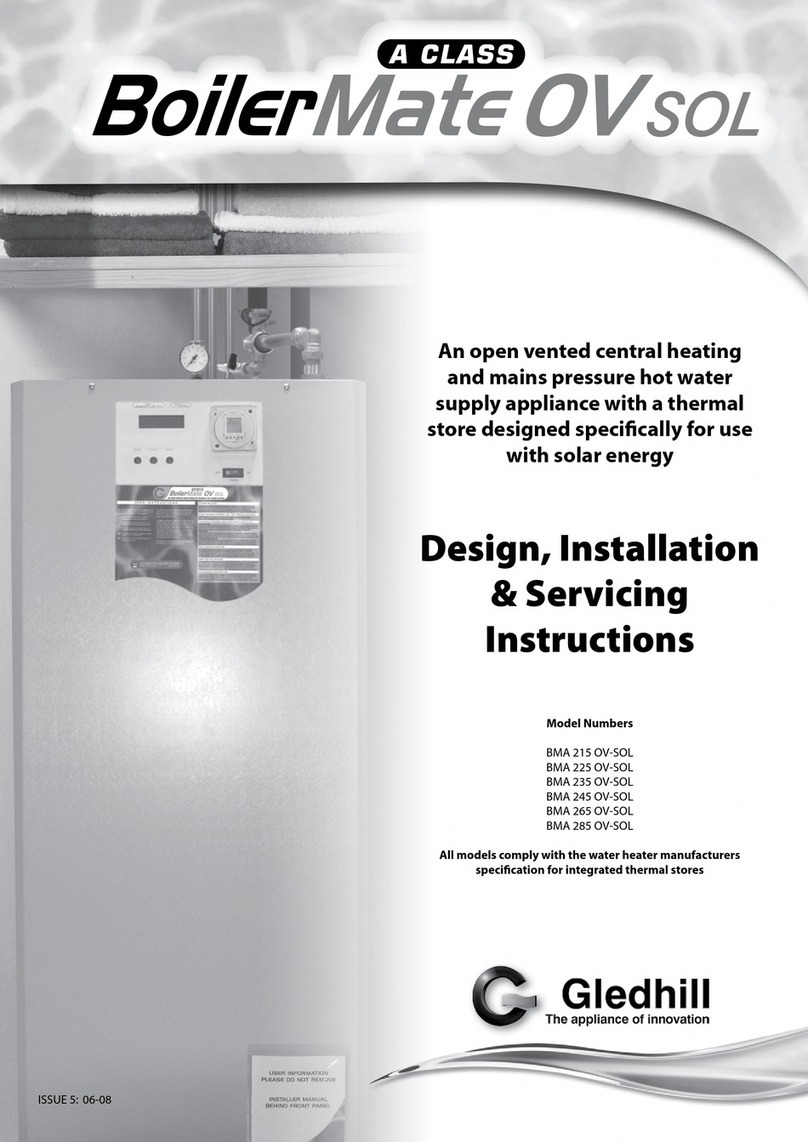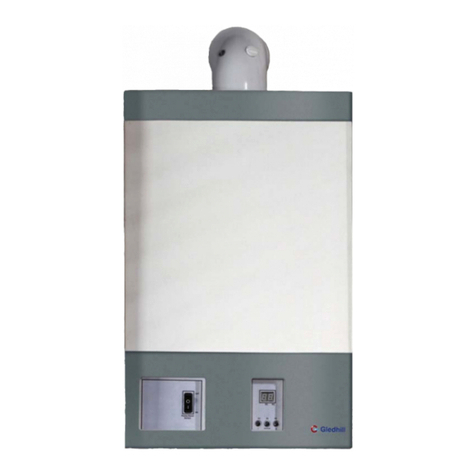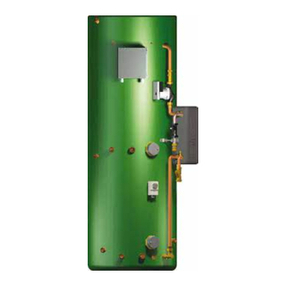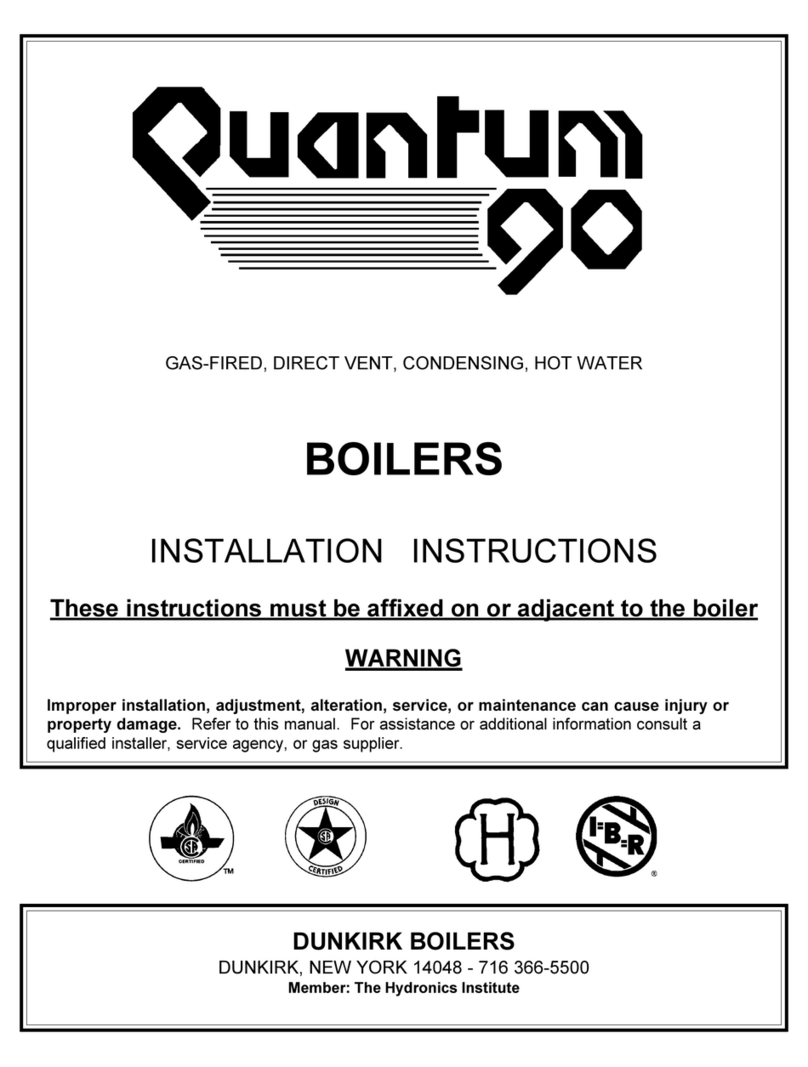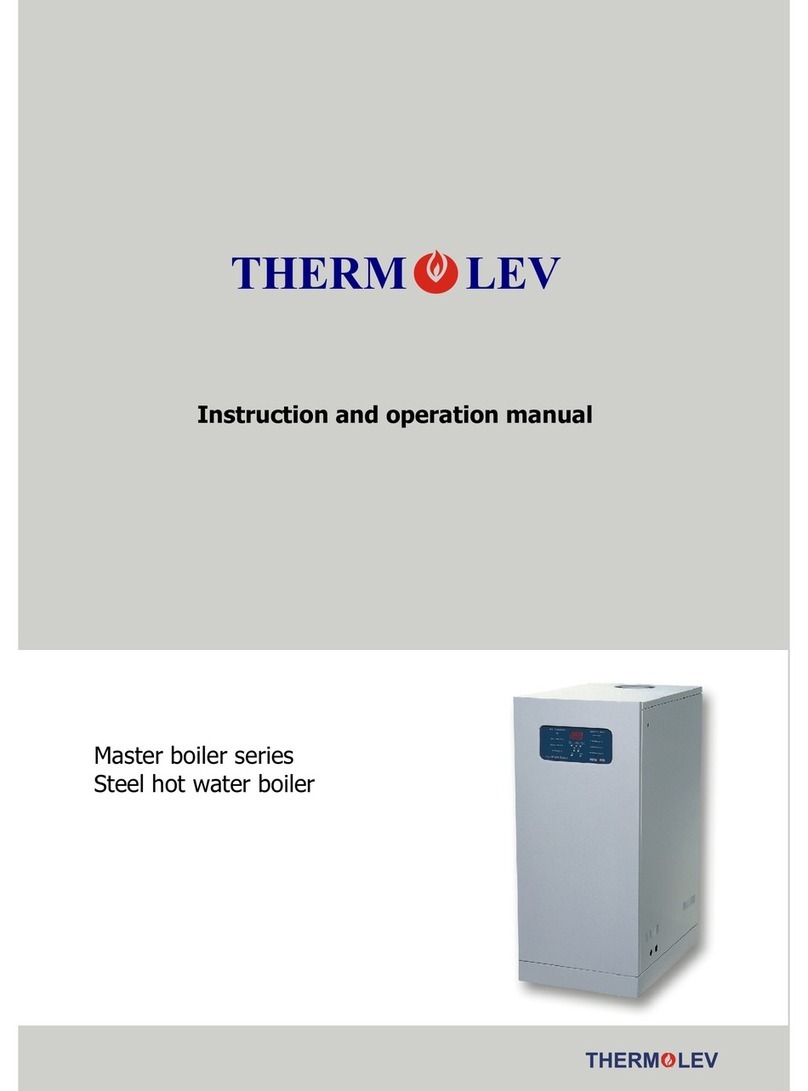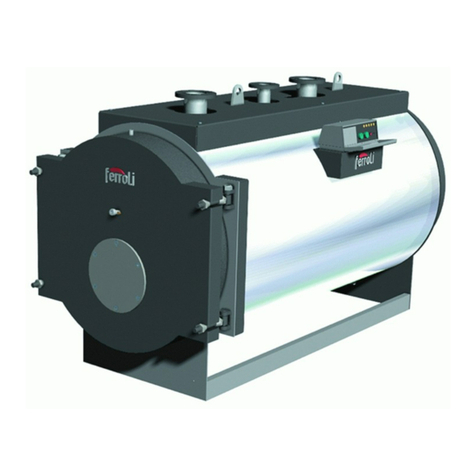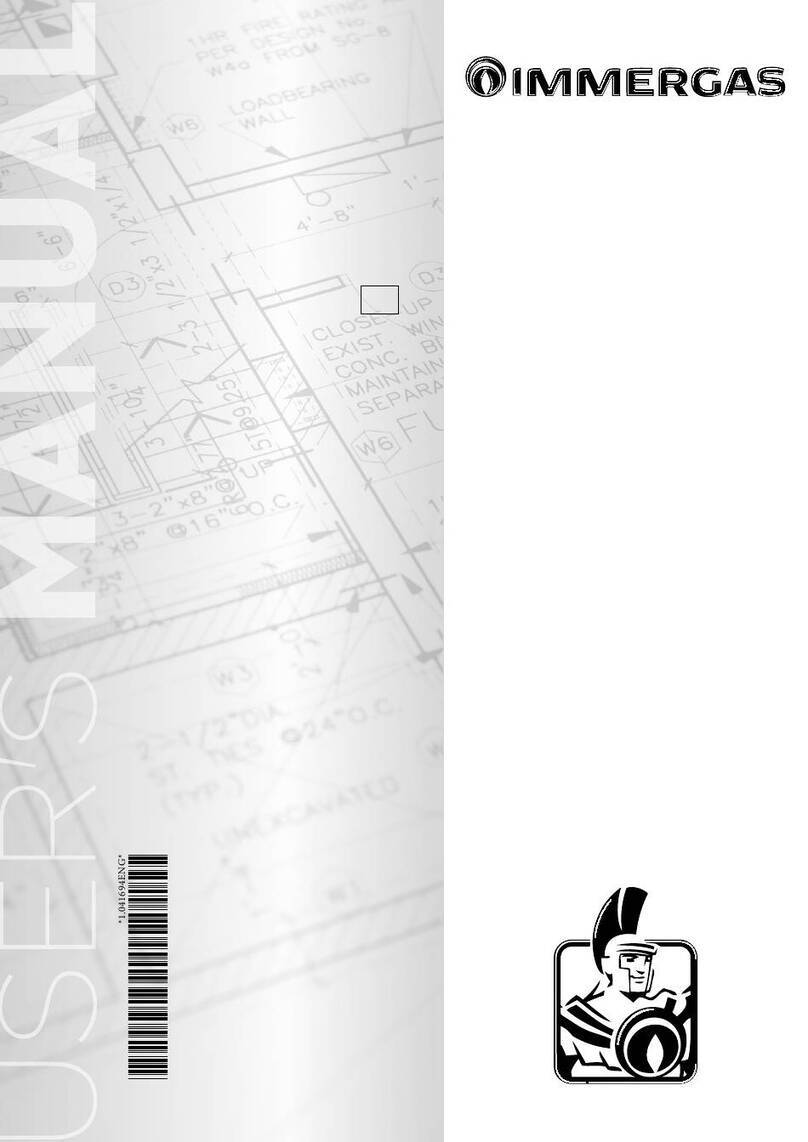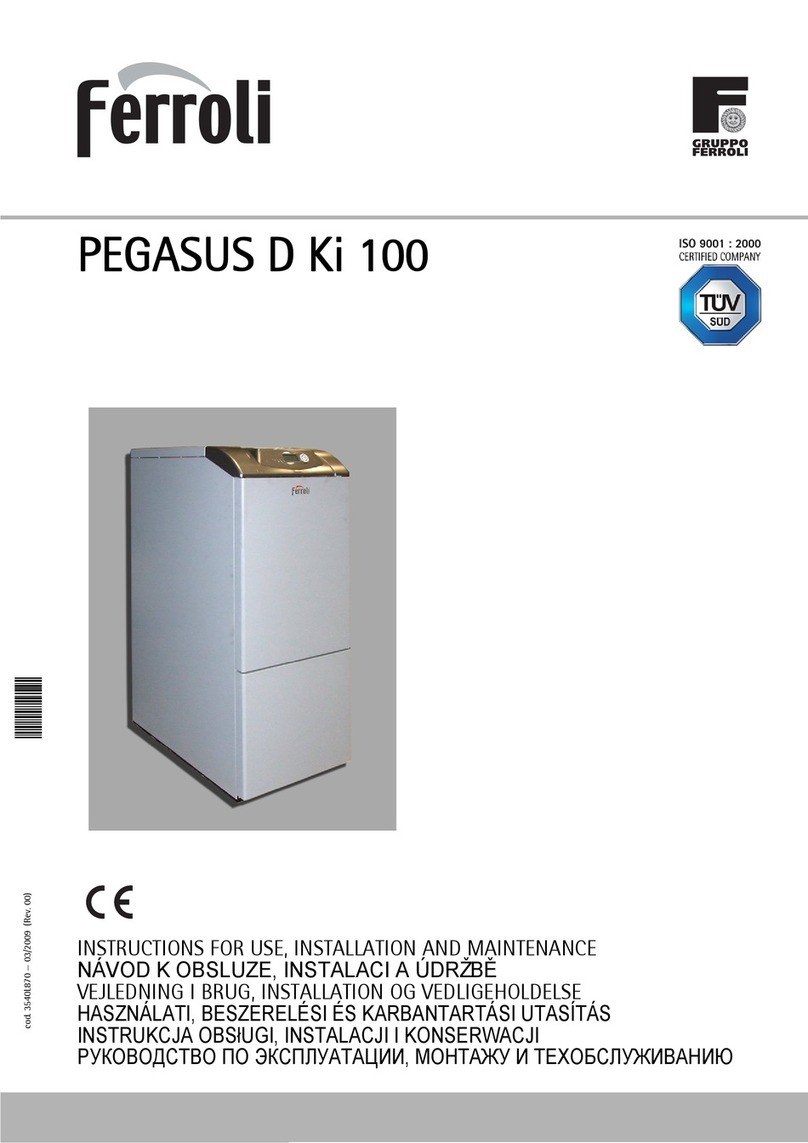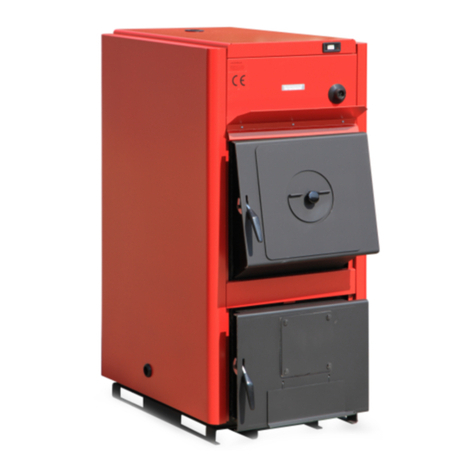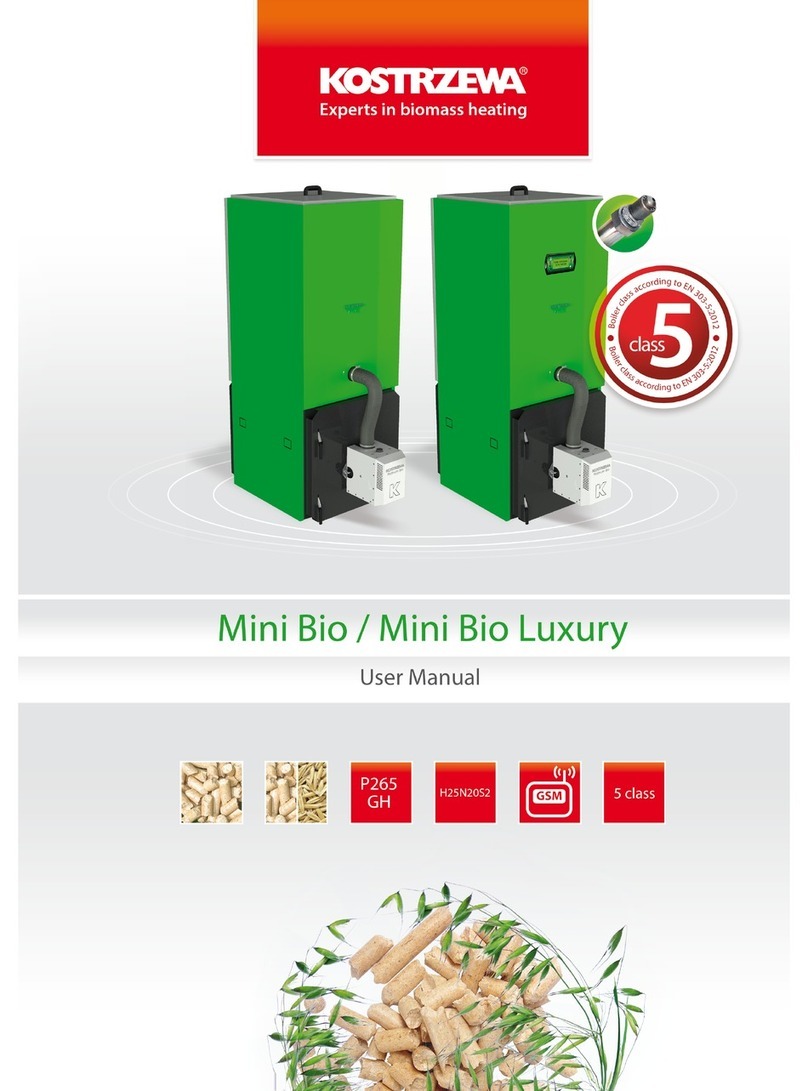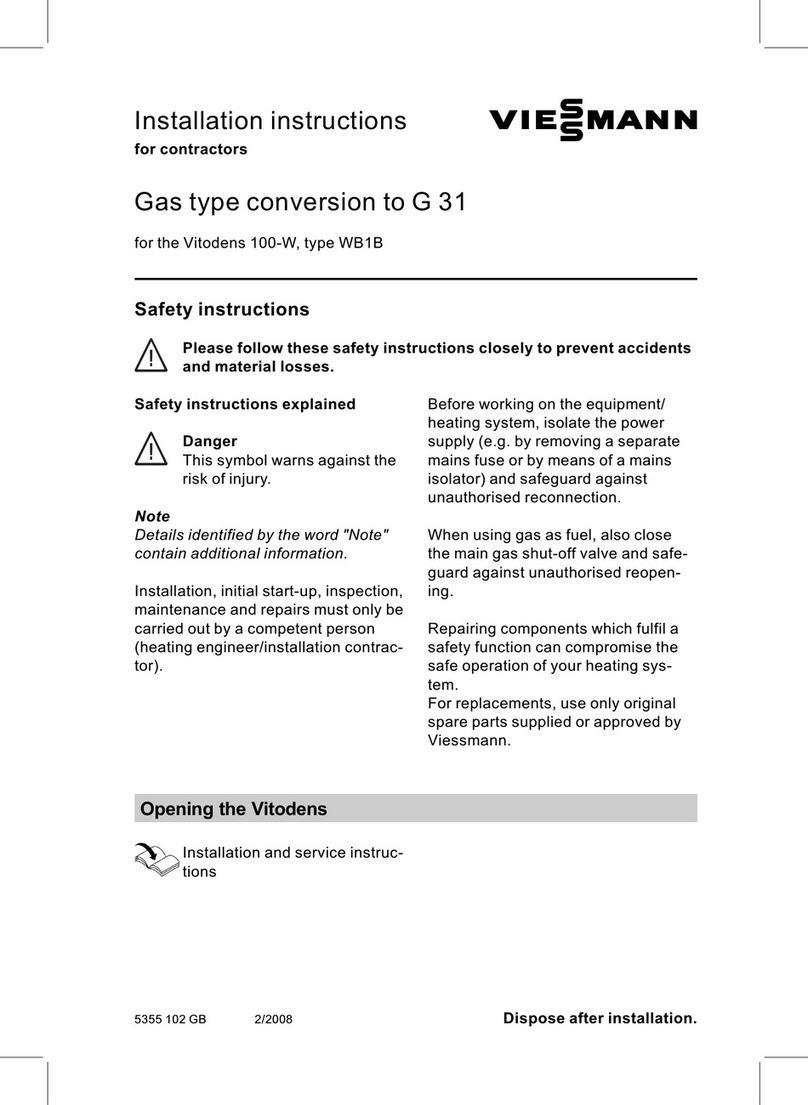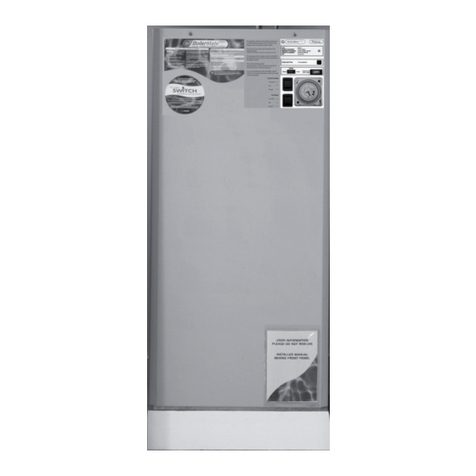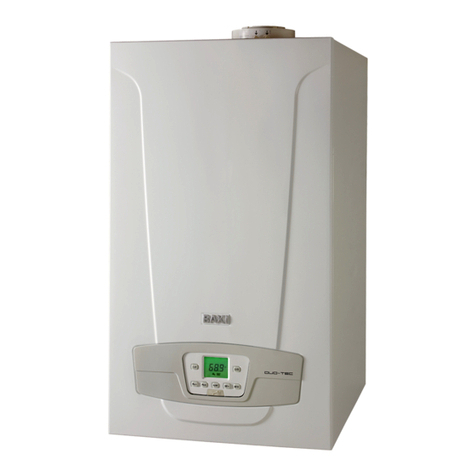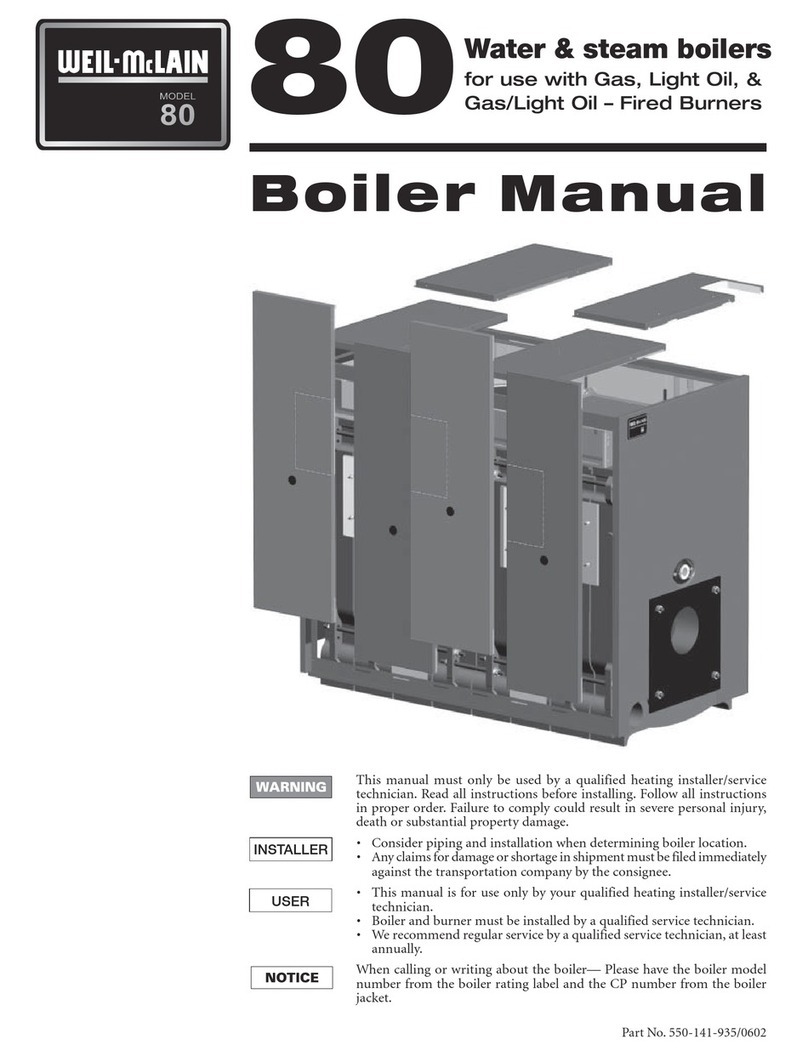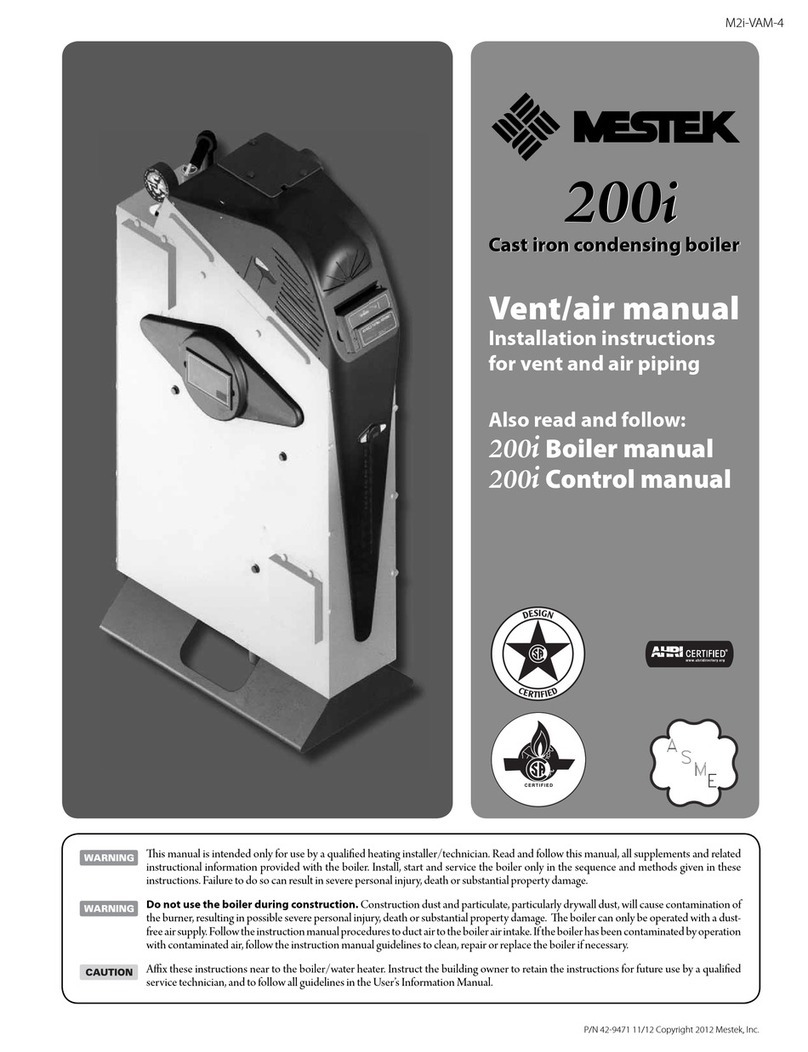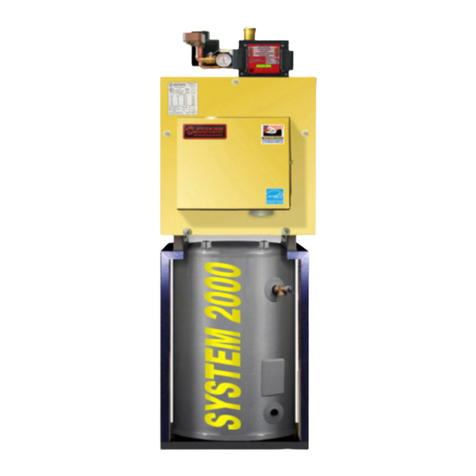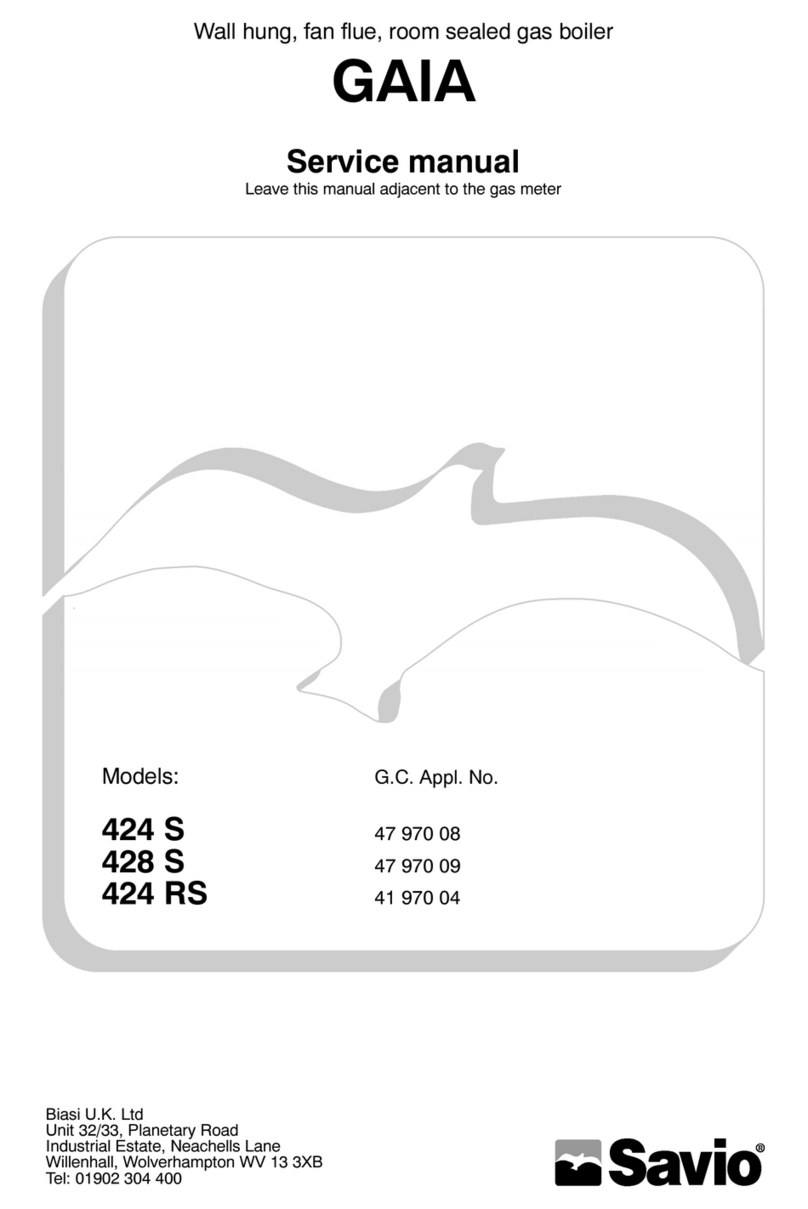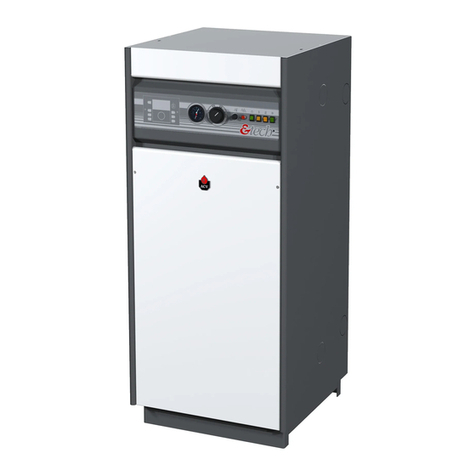
Supplied By www.heating spares.co Tel. 0161 620 6677
Page 11
GULFSTREAM2000
2.2 Use in hard water areas
A patented control system prevents domestic water from exceeding 55o C for most
of the operational time of the appliance.
IT IS NOT NECESSARY TO FIT ANY FORM OF SCALE INHIBITING EQUIPMENT IN THE
DOMESTIC COLD SUPPLY TO THE APPLIANCE.
If it ever becomes necessary the plate heat exchanger is easily replaced with a
service exchange unit without complete drain down.
The appliance is room sealed and it is not a mandatory requirement to provide
ventilation to the appliance cupboard.
However, in many cases the appliance cupboard is also used as an airing cupboard
and in these situations some ventilation openings at high and low level will be
helpful in providing air movement.,
2.1 Mains Pressure Domestic Hot Water Supply
1. GulfStream models are designed to be fed directly from the mains. They fulll
the requirements of Water Byelaw 91, and therefore do not require a check
valve to be tted to the supply pipe. The performance of the GulfStream is
directly related to the adequacy of the cold supply to the dwelling. This must be
capable of providing for those services which could be required simultaneously
and the maximum demand should be calculated. GulfStream OV model will
operate at pressures as low as 1 bar which must be available when local demand
is at its maximum, but the preferred range is upwards of 2 bar. 2 bar must be
available at all times for the correct operation of the SP model for the automatic
lling device to function correctly. As a general guideline, although a 15mm
service may be sufcient for the smaller dwelling with one bathroom, a 22mm
service is preferred (25mm MDPE) and should be the minimum for larger
dwellings, and properties above two storeys.
2. If a water meter is tted in the service pipe, it should have a nominal rating to
match the anticipated maximum simultaneous hot and cold water demand,
calculated in accordance with BS 6700. This could be 50 litres per minute
in some properties.
3. If the incoming static mains water pressure exceeds 5 bar at any point in
the 24 hour cycle then a pressure limiting valve set at 3 bar should be tted
downstream of the stop tap where the cold supply enters the property. Units
must be tted strictly in accordance with the requirements of the Local Water
Undertaking who should be consulted prior to installation. In the event of any
difculty please contact ourselves as the manufacturer.
4. Equipment used in the system should be suitable for a working pressure of 5
bar. A non-return valve is not required. Should ancillary equipment, requiring
a non-return valve, be tted to the same mains supply as the GulfStream, then
this valve must not be tted between the inlet of this mains supply to the
house and the GulfStream.
No safety ttings are required on the secondary system.
SYSTEM DESIGN
1. Although a 15mm copper supply may
be adequate for the smaller 1 bathroom
dwelling, a 22mm (25mm MDPE) supply is
preferred where possible to make best use
of this appliance.
2. Internally run in 22mm copper to the
GulfStream and from the GulfStream in
22mm past the hot draw-off to the bath.
3. We would recommend that best results
for a balanced system are achieved by
fitting appropriate flow restrictors to
each hot and cold outlet. These MUST
be tted in cases where the nal branch
pipe sizes are not as recommended in
item 4 or water pressures are above the
recommended water pressure range of
2-3 bar. See Appendix B for details of
suitable ow regulators.
4. Alternatively the tee-offs to the outlets
should be in 10mm except for the bath and
showers which should be 15mm (1 metre
minimum).
5. Alternatively, tee-offs to terminal ttings in
existing property can easily be tted with
ow restrictors to balance the simultaneous
demand.
6. The hot water supply to a shower mixing
valve should be the first draw-off point
on the circuit. The cold water supply to a
shower mixing valve should be fed directly
from the rising main and should be the rst
draw-off point on the cold circuit.
7. Typical cold and hot water distribution
network is shown in Figures 9 and 10.
All the recommendations with regard to
pipework systems in this manual are
generally based on the use of BS/EN
Standard copper pipework and ttings.
2.3 Cold and hot water distribution
network
2. HOT & COLD WATER SYSTEM
1. VENTILATION





















